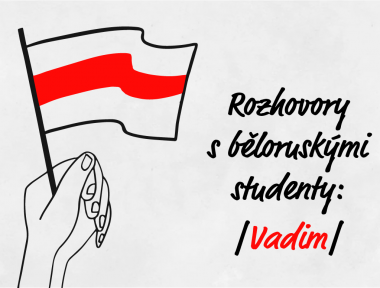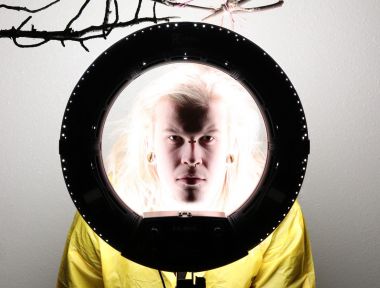Despite being the third largest city in the Czech Republic, Ostrava still faces the consequences of its industrial past. It is now at a point where Ostrava and the entire surrounding region is looking for new ways to develop further, leading to a higher standard of living for its inhabitants and a new identity for the region. The two universities, the University of Ostrava and Technical University of Ostrava, which have become important regional centres of science and research in recent years, should help it to do so.
Now the University of Ostrava has received a financial subsidy of CZK 1.8 billion to support the transformation and development of the region in the field of innovation, education, science and research. Whether it is too much or too little, how scientists can put the results of their research into practice and how science is developing in Ostrava, speaks a doctor, haematooncologist, former Vice-Rector for Strategy and Development at the University of Ostrava, Professor Roman Hájek.
It was he who was at the birth of the largest ever scientific research project of the University of Ostrava – the LERCO project (Life Environment Research Center Ostrava). As part of the LERCO project, a new scientific research hub is being built in Ostrava-Vítkovice, which will gradually become a base for excellent science.
It should attract top and emerging scientists to Ostrava, as well as more applicants for studies and become a centre for quality education in medical and natural science.
The LERCO research hub will bring a range of innovations in biomedicine, cancer treatment and improving the quality of life of the population. The ambition of the project is also to offer for commercial exploitation a range of new treatment methods and tools, patents and software used in medicine and biomedicine. The selected scientific teams are working on behavioural health, improving quality of life, for example, increased self-sufficiency in old age, related musculoskeletal research, development of new rehabilitation tools and aids and much more, with a particular focus on affordability and cost-effectiveness.
When you founded the haemato-oncology department at the Ostrava University Hospital ten years ago, did you count on it also serving as a scientific research facility? With what idea did you enter into this project?
I have to admit that I cannot imagine setting up a clinical department at the Faculty of Medicine in a university hospital that would not naturally include science and research. I myself worked for twenty-five years at the University Hospital in Brno, where I founded two research teams in addition to my clinical work. I have also drawn on this experience here in Ostrava.
How do you assess the development of this workplace over the last ten years? Can it be competitive on a national or European scale?
In retrospect, it is a concrete demonstration that it is possible to build a workplace in Ostrava with a scientific team that is fully competent at a standard European level in its research. On the other hand, we were the pioneers who had to explain over and over again that to do our work we need, for example, a biobank, that we need a team of non-medical scientists, or that clinical trials cannot be done on your knee with the help of doctors and nurses, but that you need a management team and so on. We had to explain that doctors are supposed to treat, not do science. The whole research is about convincing the people around you that natural scientists are indispensable for theoretical and applied research, and they don’t have to be with patients, but they will do the science and it will be their priority. That’s how it works everywhere in the world. And a few exceptional super-active physicians can fit well into such a system and apply their clinical perspective.
So what obstacles do you most often encounter that do not allow you to work in ideal conditions?
The biggest obstacle is the mindset of people who have never experienced anything like this and are not willing to change their attitude.
The LERCO project increases the potential of our university to be able to attract more transformational projects and to attract new quality researchers to the region, offering new job opportunities and modern study programmes.
However, the LERCO project, worth almost two billion crowns, shows that attitudes are changing, that Ostrava can become a top scientific research hub with excellent equipment…
The LERCO project is an investment from the European Union and the Ministry of the Environment in less developed regions to transform and develop in an area where they are not completely strong, but where there is potential. We do have the potential, but the reality is that Prague, Brno or Olomouc receive many times higher subsidies for science and research. The gap between them and us is not only not closing, we are not even getting closer. Not even with the LERCO project.
In the future, the LERCO project will enable us to improve and stabilise our existing scientific teams and further develop our capacities, increase our scientific potential and our absorption capacity. We are now at the very limit of our human and logistical capacity, and we need to keep attracting new projects if we are to develop as a region or a university. The LERCO project increases the potential of our university to be able to attract more transformational projects and to attract new quality researchers to the region, offering new job opportunities and modern study programmes. If we are to maintain our credit as a university, we need to intensify and improve our own research activities.
The Blood Cancer Research Group under the leadership of Roman Hájek was founded in 2015 as a joint project of the Faculty of Medicine of the University of Ostrava and the Department of Haemato-Oncology of the University Hospital Ostrava. The individual research teams focus on basic and preclinical research with the main goal to develop new therapeutic approaches in the field of monoclonal gammopathies and other hematological disorders. The scientific core of the BCRG consists of three closely collaborating teams – the genomics team, the cell therapy team and the molecular cell biology team. The scientific teams are now working on innovations in treatments for selected cancers using gene therapy that will lead to more accessible and less expensive cancer treatments. Thanks to the LERCO project, scientists will have the necessary modern facilities for their work and the opportunity to expand their research teams with other top scientists.
The LERCO project will end in 2027, however, it carries a number of indicators that lead to the expansion of teaching and learning in the future. What next?
LERCO will create the modern programs we need. As I have already stated, our main objective is to increase the research potential and absorptive capacity of the university so that we are able to administer and implement further projects. And that goes back to the fact that we need good quality and well-paid people. We are trying to “channel” the money in a very meaningful and purposeful way, so that it leads to the expansion of teams with new quality researchers and to quality scientific outputs. We want to continuously publish within the project, continuously pursue additional follow-on grants, and continuously recruit additional outside researchers to enrich our team.
At the moment, we can say that the construction of the LERCA building in Ostrava-Vítkovice is going well, which is very important for us, because it will finally allow our researchers to share common space and expensive equipment, to meet during breaks and lunches where they can informally consult their ideas, which in turn can accelerate the potential we have.
How do you manage to recruit new scientists to your team? Is the new Ostrava facility interesting for them?
Unfortunately, we are not very successful in this area. I have to say that the conditions for moving scientists, especially PhD students or early postdocs, were much more favourable eight or ten years ago. In some European countries, money for science was being cut, for example in Spain, Italy or France, and we managed to get very good people from there then.
Today, however, the situation is different. In the Czech Republic, and indeed in the whole of Europe, there are many good institutes with excellent infrastructure that absorb high-quality PhD students or master’s students, which means that as a rule they do not come to Ostrava, they are only the absolute exceptions. It is a very competitive environment.
If the person is still young and starting out, it’s not that difficult to get them here, but when we try to attract established foreign scientists who have families, their children go to school, it starts to take on a different dimension. The cost of living is lower than in other big cities, the public transport is excellent, the air is no worse than in Prague or Brno, but we can’t offer, for example, quality international education for their children. We cannot offer them really good quality housing, and the city centre is not particularly attractive either. In short, the whole logistics of the facilities for their families are not built up enough to be competitive.
The whole research is about convincing the people around you that natural scientists are indispensable for theoretical and applied research, and they don’t have to be with patients, but they will do the science and it will be their priority.
From the perspective of a former Vice-Rector, how do you think the quality of education is moving forward?
We are still facing a shortage of people, especially in clinical disciplines. I would say that conceptually, higher education is completely wrong. Many people, in order to be well paid, have to fragment their work into a number of sub-activities. In order to have quality people doing really good work, you have to pay them. That’s absolutely fundamental. And if the politicians have decided that our university teachers are going to be paid less than secondary or primary school teachers, then everything else follows from that. And now the question is how much we as universities can compensate for that with other projects, which is always extra work for a lot of people and of course not always possible.
Spin-off companies may be a way to bring additional funding to universities. What do you see as the biggest pitfall, why universities often fail to put research results into practice?
Academics generally have a strong tendency to think academically and are not business oriented. This means that they work on good research that ends up publishing a paper and almost never have a follow-up project that leads to translation into practical action. Sometimes, of course, this is not even possible if it is theoretical research.
But the problem is known, and those universities that have long understood this are partly living off startup and spin-off companies. So far, we are saying that we want to go down that road, but we need to find the right activities to do that. We believe that LERCO will also contribute in this area and help to bridge the gap.
Prof. MUDr. Roman Hájek, CSc. is world-renowned expert in the fight against multiple myeloma, the second most common blood cancer. Professor Hájek is the Head of the Department of Haemato-oncology at the University Hospital Ostrava and the Faculty of Medicine of the University of Ostrava, and is a Professor of Oncology. He is the chairman of the Czech Myeloma Group and a member of the board of the European Myeloma Network and a member of other similarly themed international organisations. He has published more than 600 scientific articles (h-index over 60). From 2015-2023, he served as Vice-Rector for Development and Strategy at the OU. He is the project leader of the Life Environment Research Center Ostrava (LERCO) project.


 9 min.
9 min. 



